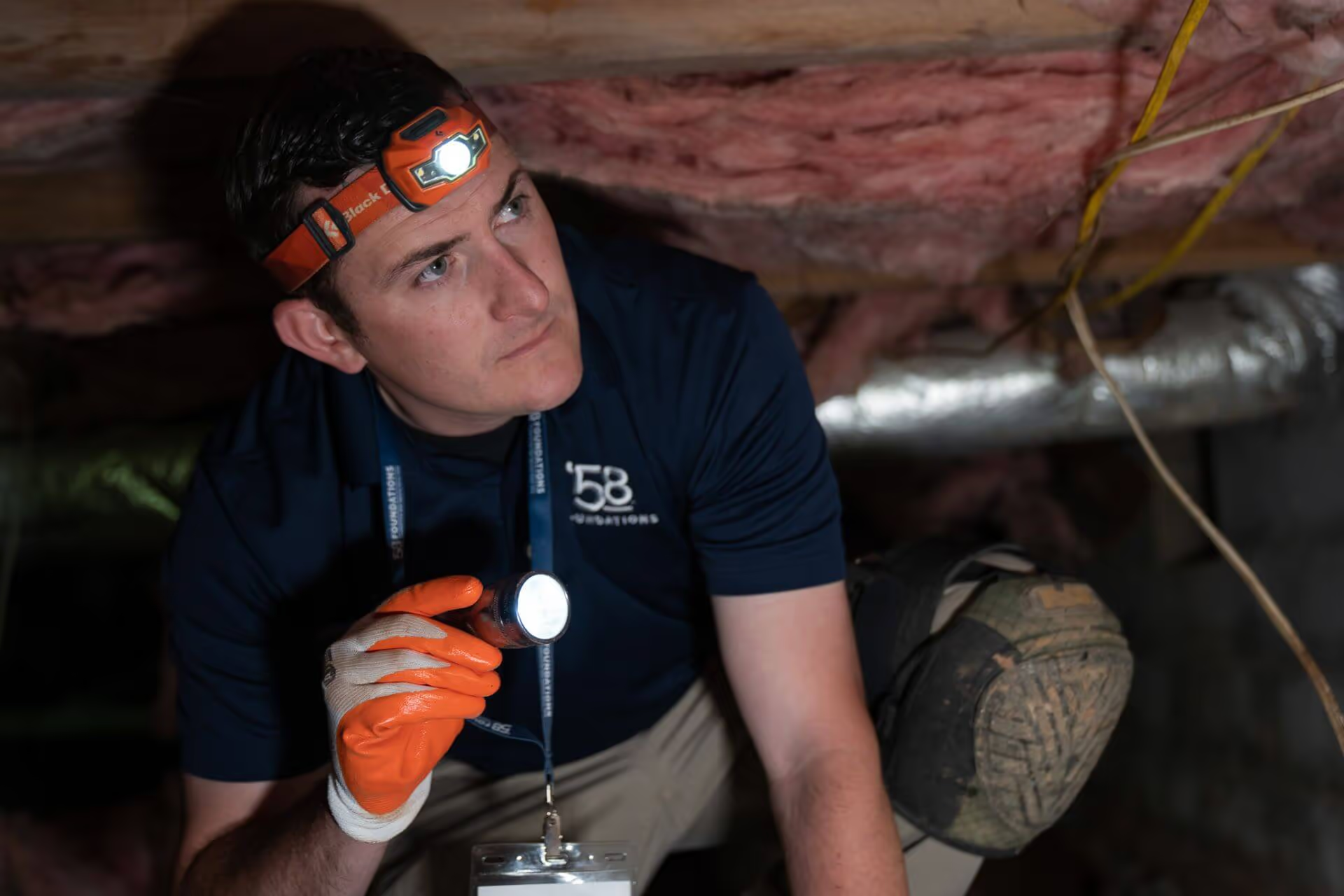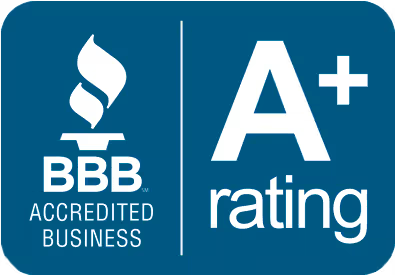Waterproofing a basement is one of the most important steps you can take to protect your home from water damage, mold, and structural issues. A basement that is not properly waterproofed can lead to serious problems, including foundation cracks, flooding, and unhealthy living conditions. With several waterproofing methods available, homeowners often wonder which is the best option. The answer depends on the specific needs of your basement, the source of the water intrusion, and your budget. In this article, we'll explore the most effective basement waterproofing methods, their advantages and disadvantages, and how to choose the right solution for your home.
Before diving into the different waterproofing methods, it’s essential to understand why basements leak in the first place. Common causes of basement water issues include:
Understanding the source of the water intrusion is crucial for choosing the best waterproofing method. A comprehensive inspection of your basement and foundation will help identify the root cause of the problem.
Exterior waterproofing, also known as "positive-side" waterproofing, involves stopping water from entering your basement by creating a barrier on the outside of your foundation. This method is considered one of the most effective ways to prevent water from penetrating your basement walls.
Interior waterproofing, also known as "negative-side" waterproofing, involves managing water that has already entered the basement. This method focuses on directing water away from the foundation and managing moisture within the basement.
Waterproofing paints and sealants are a popular option for homeowners looking for a quick and inexpensive way to manage minor moisture issues in their basement. These products are applied directly to the interior walls and floors and create a barrier that helps prevent water from seeping through.
Drainage systems are a critical component of both interior and exterior waterproofing methods. These systems are designed to collect and redirect water away from the foundation, preventing it from entering the basement.
Choosing the best waterproofing method for your basement depends on several factors, including the source and severity of the water intrusion, the condition of your foundation, and your budget. Here are some considerations to help you decide:
There is no one-size-fits-all answer to the question of which waterproofing method is best for basements. The right solution depends on the specific circumstances of your home, including the severity of water issues, the condition of your foundation, and your budget. Exterior waterproofing is often considered the most effective and long-lasting solution, particularly for significant water intrusion. However, interior waterproofing methods can be highly effective for managing moisture and minor water issues, especially when combined with a comprehensive drainage system. To ensure you choose the best method for your basement, it’s important to have a professional inspection to identify the source of the problem and recommend the most appropriate solution. Proper waterproofing is an investment in the longevity of your home, protecting it from water damage, mold, and structural issues for years to come.
If you are in the market for basement waterproofing calling in a professional such as ’58 Foundations and Waterproofing that specializes in these services can help. We will provide you with a zero obligation FREE inspection to help you determine the severity of your situation and the best solutions available. Remember that putting an inspection off can lead to more costly remedies down the line.
Waterproofing a basement is a crucial step in protecting your home from water damage, mold growth, and structural issues. When faced with basement moisture problems, many homeowners wonder whether they can tackle the waterproofing process themselves or if they should hire a professional. While some aspects of basement waterproofing can be handled as DIY projects, others are more complex and may require professional expertise. In this article, we'll explore the different aspects of basement waterproofing, assess which tasks are suitable for DIY, and provide guidance on when it's best to call in the experts.
Before deciding whether you can waterproof your basement yourself, it’s important to understand what basement waterproofing entails. The goal of waterproofing is to prevent water from entering your basement and to manage any moisture that does make its way inside. This typically involves a combination of exterior and interior waterproofing methods, as well as proper drainage systems.
Key components of basement waterproofing include:
If you're considering waterproofing your basement yourself, there are several tasks that you can likely handle, especially if the moisture issues are minor. Here are some DIY-friendly basement waterproofing methods:
While some basement waterproofing tasks are suitable for DIY, others are more complex and require professional expertise. Here are some scenarios where it's best to hire a professional:
If you decide to tackle some aspects of basement waterproofing yourself, it’s important to prepare properly to ensure success. Here are some steps to take before starting your DIY project:
Waterproofing your basement is a vital task to protect your home from water damage, mold growth, and potential structural issues. While some aspects of basement waterproofing can be tackled as DIY projects, others require professional expertise to ensure effective and long-lasting results. Simple tasks like sealing cracks, applying waterproof coatings, and improving drainage can be done by homeowners, especially for minor moisture issues. However, severe water intrusion, foundation repairs, exterior waterproofing, and mold remediation are best left to professionals who have the necessary skills, tools, and experience.
Before starting any DIY waterproofing project, it’s important to assess the severity of the moisture problem, gather the right tools, and plan your approach carefully. If you’re unsure about the extent of the issue or the best solution, consulting with a professional can provide peace of mind and help you avoid costly mistakes. Ultimately, the key to successful basement waterproofing is to address the problem at its source, whether that requires a DIY solution or the expertise of a professional.
If you are experiencing potential issues with a damp or wet basement calling in a professional such as ’58 Foundations and Waterproofing that specializes in these services can help. We will provide you with a zero obligation FREE inspection to help you determine the severity of your situation and the best solutions available. Remember that putting an inspection off can lead to more costly remedies down the line.
Discovering mold in your basement can be alarming. Not only is mold unsightly and unpleasant, but it also poses serious health risks and can lead to significant structural damage if left untreated. The good news is that a moldy basement can indeed be fixed, but the process requires thorough assessment, remediation, and preventative measures to ensure that the problem doesn’t return. In this article, we’ll explore the steps involved in fixing a moldy basement, from identifying the cause of the mold growth to implementing long-term solutions.
Mold thrives in environments where moisture is present. Basements are particularly susceptible to mold growth because they are often damp, dark, and poorly ventilated. Mold can grow on a variety of surfaces, including wood, drywall, insulation, and carpeting. The key to fixing a moldy basement is addressing both the mold itself and the underlying moisture issues that allowed it to grow in the first place.
Before you can effectively fix a moldy basement, it’s important to assess the extent of the problem. Mold can be visible on surfaces, but it may also be hidden behind walls, under flooring, or in insulation.
Inspection Tips:
Mold will continue to grow as long as moisture is present, so identifying and addressing the source of moisture is a critical step in fixing a moldy basement.
Common Moisture Sources and Solutions:
Once the source of moisture has been addressed, the next step is to remove the existing mold. Mold removal can be a DIY project for small areas, but larger infestations or toxic molds, such as black mold, may require professional remediation.
After mold removal, the affected areas may need to be repaired and restored. This can include replacing damaged drywall, insulation, flooring, and other materials. It’s important to use mold-resistant products when restoring your basement to reduce the risk of future mold growth.
To ensure that your basement remains mold-free, it’s important to implement long-term preventative measures. These steps will help you maintain a dry, healthy basement and prevent mold from returning.
While many homeowners can successfully address mold issues on their own, there are situations where professional help is necessary:
A moldy basement can be a serious problem, but with the right approach, it can be fixed. The key to success lies in thoroughly addressing both the mold itself and the underlying moisture issues that allowed it to grow. By following the steps outlined above—assessing the extent of the problem, addressing moisture sources, removing mold, repairing damage, and implementing long-term preventative measures—you can restore your basement to a healthy, mold-free condition.
In some cases, particularly with widespread or toxic mold, professional remediation may be necessary to ensure the safety and effectiveness of the cleanup process. Whether you handle the issue yourself or seek professional help, taking action to fix a moldy basement will protect your home and your health, giving you peace of mind and a safer living environment for years to come.
If you are experiencing potential mold issues in your basement calling in a professional such as ’58 Foundations and Waterproofing that specializes in these services can help. We will provide you with a zero obligation FREE inspection to help you determine the severity of your situation and the best solutions available. Remember that putting an inspection off can lead to more costly remedies down the line.
As a homeowner, knowing what to do when your basement floods can feel overwhelming.
But it’s important to act fast to prevent permanent damage to your belongings and mold growth. If you are currently dealing with a flooded basement due to things like burst pipes, a sewage backup, or heavy rainfall that found its way through cracks in your foundation , this guide is here to help you to begin the remediation process fast. The steps you should take during a basement flood include:
Safety Note: If you’re dealing with a sewage backup, do not enter floodwater in your basement—even with protective gear. This water is contaminated, which means it could put you at risk of contracting dangerous diseases. In this scenario, it’s important to call a plumber immediately to get to the bottom of your problem. As well as a professional restoration company to safely handle the contaminated black water and sanitization process.
Before getting near your basement, you must ensure that all electrical power is shut off to prevent electrocution. Regardless of how much standing water there is. If your home’s circuit breaker is located inside your garage (or you have an outdoor fuse box), be sure to cut the power to your entire home right away. If your circuit breaker is inaccessible because it’s located within your basement, you must call a licensed electrician before moving forward with the next steps.
No matter the source of your basement flooding, it’s important to put on protective gear like rain boots, waterproof gloves, and/or a mask before entering your basement and following the next steps. In extreme cases of flooding, hip or chest waders may be useful if you own them.
Now that the power to your house is shut off and you’re equipped with protective gear, you can enter your basement. If you’re dealing with controllable flooding sources like burst pipes, it’s important to stop the flooding as quickly as possible. So be sure to turn off your water main right away. If rainwater is the cause of your basement flooding, you’ll have to wait until the rain or storm stops before the flooding will stop.
During this stage, do your best to remove any important items as quickly as you can to minimize damage to your belongings. Be cautious when moving throughout the flooded area, as surfaces will be slick.
You can now begin the water removal process. To remove standing water, you can utilize tools like a water-safe wet vacuum, pool pump, or a sump pump. If some water is still left over after using these tools, you can use a mop or towels to soak up the rest (just be sure to thoroughly wash and dry your mop head and/or towels afterward). During this stage, it’s important to eliminate standing water as quickly as possible to prevent the possibility of mold growth.
Tip: If you have an old or under-powered sump pump that can’t keep up with basement flooding, ‘58 Foundations & Waterproofing can help. Our team has meticulously tested numerous makes and models of sump pumps to ensure we provide the most reliable, long-lasting, and durable sump pumps on the market.
After standing water has been eliminated, it’s time to get started removing and drying out all your remaining belongings. To begin, remove all water-damaged property that was affected by the flood (e.g., furniture, books, storage containers, etc.) and place them in a well-ventilated area where they can dry out. Damp objects that cannot be cleaned with a liquid-based disinfectant—such as cardboard boxes—should be thrown away to avoid mold growth.
If you have any valuable documents, paperwork, or photographs that have been dampened, try placing them between waxed paper or wrap them in a non-woven polyester cloth before putting them in the freezer. This may work to stop water damage and prevent mildew growth.
It’s also important to remove heavily soiled drywall, insulation, or flooring such as carpeting. The presence of these damp items can prevent your basement from fully drying out and promote mold growth. While it’s sometimes possible to salvage wet drywall, insulation, or to dry wet carpet, they can easily harbor mold and mildew if they aren’t dried properly. The same goes for basements that use hardwood floors or wood tile; it is important to dry them as best as possible and survey for damage. Depending on how damaged your wood flooring is, you might not need to replace it (or maybe replace just a little) and only need to refinish it.
Safety Note: As you’re removing damp objects, be sure to leave electrical items like televisions, gaming consoles, or lamps in place. Even if the electrical power to your home is disconnected. For your safety, it’s best to let electrical items dry in place.
With all damp objects removed from your basement, you can begin to dry out the area and minimize the chance of mold growth. Utilize a dehumidifier or dehumidifiers to remove moisture from the air and large, high-powered fans to encourage air circulation. (These tools can be rented if you don’t already have them). Don’t forget to empty your dehumidifier and clean out its filter often and be sure to run your air conditioning as much as possible as things dry out.
After you’ve given your basement several days to dry out, it’s time to sanitize the entire area. While wearing rubber gloves, protective eye wear, and a mask, be sure to scrub all hard surfaces with a solution of one cup of chlorine bleach to one gallon of water to remove mold and bacteria. Don’t forget to ventilate the space as much as possible during this process. For extra assurance, you can also set up a HEPA air purifier to eliminate airborne mold spores and other allergens.
Tip: Still finding mold or suspicious spots in your basement even after sanitizing? At ‘58 Foundations & Waterproofing, our professional mold remediation services can help. During a free mold inspection, we can help you locate sources of mold, and work with you to contain and eliminate them quickly.
It’s never a good time to deal with a flooded basement. Thankfully, with this guide from ‘58 Foundations & Waterproofing, you will know what to do if your basement floods again. Additionally, our team can work with you to ensure the proper precautions are in place to mitigate damage in your basement in the event of a flood.
Our basement waterproofing solutions—which include our specially-engineered Channel ’58 drain channels installed around the perimeter of your basement floor, our high-power Workhorse sump pump, and sump pit—will actively work to move more water faster out of your basement. Ultimately, this will provide the protection your basement needs to prevent future flooding.
For extra protection to your basement, we also provide waterproofing for basement walls. This includes the installation of a heavyweight vinyl waterproof membrane or rigid plastic panels on your basement walls. Combined, these solutions provide the ultimate protection against basement flooding. We also offer foundation repair solutions to address problems that may be connected to your wet basement problem.
In addition, if you’re dealing with flooding or moisture problems in your crawl space, we also offer professional crawl space encapsulation and waterproofing services. We even offer mold removal services to keep your home safe and healthy.
With over 64 years of experience in basement waterproofing, you can always depend on ’58 to keep your basement safe and dry. To provide extra peace of mind, we also offer a life-of-the-structure warranty and a money-back guarantee. Give us a call today to schedule for a free inspection and to receive a detailed estimate! We look forward to helping you with all your basement flooding repair needs!
So, you’ve had drainage channels laid down along the perimeter of your basement or your crawl space. Once installed, they should all be ready to begin guiding any surrounding groundwater to a collection point where the sump pump awaits. But what is a sump pump for? There needs to be something to help make sure the water moves away from your home, and not just flow back up into your lower level. That’s where the sump pump comes in. If you’re wondering “what is a sump pump and how does it work?” Read on to learn about a key part of any basement or crawl space waterproofing system.
A sump pump is installed in what’s called a sump pit, where water collects to be then pushed out and away from your house via a discharge pipe. Whether it’s during a heavy rain or when a lot of snow begins to melt, water starts to collect in your sump pit as they run around your lower level’s drainage channels. Once the water reaches a certain level, typically this is when your sump pump will go from stand-by to activation. The water gets pumped into the discharge pipe and from there it is pushed to a distant location away from your foundation and home. The aim is to get the water far enough from your home that it doesn’t return to erode your foundation. Including surrounding soil, and put further work on your sump pump. There are several kinds of sump pumps out there, which activate based on different conditions.
If you’re looking to waterproofing your basement or crawl space against the rainy and snowy weather in your area, investing in a sump pump can provide added protection and benefits that will both help your lower level as well as your wallet…
Depending on where you live, you ultimately may or may not need a sump pump. Some areas have climates with more humidity and moisture than others. Depending on your area’s unique climate, it might or might not be necessary. But getting an expert opinion can help you make a more educated choice. Here are some conditions that might make a sump pump necessary…
For many homeowners, their home is one of the greatest investments of time and money. The condition of their home can have a direct impact on their quality of life. This also includes the condition of the lower level of your home, whether it’s a basement or crawl space. Keep your basement or crawl space dry and free of groundwater to help ensure the longevity of your foundation, your lower level, and the rest of your home. Since 1958, ’58 Foundations & Waterproofing has been providing long-lasting waterproofing solutions for basements and crawl spaces just like yours.
We have local offices all throughout the Eastern Seaboard. Whether you live near Atlanta, GA, Baltimore, MD, or Winston-Salem, NC, there’s a team of ’58 experts ready to help.
Whether you need sump pump maintenance or your waterproofing system needs one of our high-power Workhorse sump pumps, you can always lean on ’58! We also offer our own Workhorse OT battery backup sump pump to keep your waterproofing working in the case of primary pump failure or a power outage. Give us a call today to schedule for a free inspection and to receive a detailed estimate! When we’re on the scene, you can say goodbye to groundwater troubles!
As a homeowner, dealing with a wet basement or a soggy yard after heavy rain can be a frustrating experience—especially when it leads to damaged belongings, mold growth , or a dead, muddy lawn. Fortunately, there’s a tried-and-true solution that can help keep your home and your landscaping dry: the French drain system.
If you’re wondering, “Why is it called a French drain?” the answer may surprise you. While the word “French” might evoke thoughts of eloquence, the truth is quite the opposite. Coined and popularized by Henry Flagg French in his book Farm Drainage (published in 1859), a French drain system features a sloped trench that is filled with gravel or rock and a perforated pipe. This system diverts surface water and groundwater away from a specific area—such as your foundation or an area with heavy landscaping. The water then runs to designated areas like drainage ditches or a low-lying area of your property.
If you’re new to the concept of French drain systems, this guide is here to help. Below, you’ll learn of the different circumstances when you might need one and how ’58 Foundations & Waterproofing can help.
Installing a French drain system can be beneficial if you’re constantly experiencing these problems after heavy rainfall:
Depending upon which of these problems you’re experiencing, there are two different types of French drain systems that can help. Let’s examine both the outdoor and indoor French drain systems.
The gutter system on your home collects rainfall from your roof and diverts that water away from your foundation. Similarly, an outdoor French drain system collects rainfall from the ground level to achieve the same goal. For example, if water pools in low spots throughout your yard, an outdoor French drain system would ensure this water drains and flows away to a designated area. Another example is if water is making its way through your foundation and into your basement. Rather than allowing groundwater to put hydrostatic pressure on your foundation and seep indoors, an outdoor French drain system can help reroute that water away from your foundation.
Outdoor French drain systems might work well to funnel water away from low-lying areas in your yard. But they aren’t a 100% effective or cost-efficient solution to fixing a leaky or moisture-prone basement. It requires a lot of effort to install an outdoor system to alleviate hydrostatic pressure around your foundation. You must remove a significant amount of the soil—as well as any decks, patios, driveways, or landscaping—that surrounds your foundation’s perimeter. This process typically requires heavy machinery and a great deal of labor, which can be extremely costly.
The drain lines of an outdoor system can also clog with silt over time. This reduces their ability to eliminate water pressure against your foundation. When an outdoor system needs to be repaired or unclogged, the whole system must be dug up and replaced. For this reason, outdoor French drain system warranties are typically much shorter than other basement waterproofing solutions.
To ensure a basement stays dry even after heavy rainfall, an interior French drain system should be installed. With an interior waterproofing system, drainage channels are installed along the perimeter of your basement, where your basement floor meets the walls. As rainwater seeps into the soil and the water table rises to meet the foundation, perforations along the length of these drainage channels capture the water. These drainage channels then guide any captured water to a sump pit where a sump pump is installed. As water reaches the sump pit, a float valve is triggered and turns on the sump pump. The sump pump then pushes the water through a discharge pipe where the water will be deposited safely away from your foundation. This type of indoor basement waterproofing solution actively works to push water out of your basement 24/7.
Since 1958, hundreds of thousands of homeowners have depended on ’58 to waterproof their basements. Compared to outdoor French drain systems, our interior basement waterproofing systems are more cost-efficient and effective in the long run. With products like our own specially-engineered Channel ’58 drainage channels and high-power Workhorse sump pump, you can move more water faster out of your house! What’s more, they do not require extensive digging around the exterior of your foundation.
For even more moisture prevention for homes with crawl spaces, our company also offers industry-leading crawl space encapsulation services. During the encapsulation process, our experienced team will seal all crawl space vents, as well as seal the ground, walls, and support columns with a 20-mil thick vapor barrier.
With over 64 years in the waterproofing business, ’58 Foundations & Waterproofing knows how to protect your home from moisture problems and groundwater intrusion. Call us today to schedule for a free inspection and to receive a detailed estimate!
It is impossible to give an accurate cost estimate without seeing your home’s basement or crawlspace. Our professional experts have gone to many different homes—some where the solution was simple and inexpensive, while others required more extensive work. In the industry, basement waterproofing ranges in cost depending on the method that a contractor offers. Oftentimes, the cheaper methods end up costing more in the long run since they are almost always temporary fixes that need constant repair and upkeep. Luckily, it costs you nothing for a ’58 basement waterproofing expert to visit, inspect, and to put together a cost estimate based on a customized basement waterproofing solution.
The key is value. No matter what the cost is to repair your problem, if it doesn’t work properly, it has no real value because the problem still exists. The basement waterproofing solution you get must address the problem source or sources. There are several ways that groundwater can invade your basement. Without a solution that can address these various ways, your problem isn’t fixed. True value lies in the results that your basement waterproofing system gives.
Every interior basement waterproofing system that ’58 Foundations & Waterproofing installs is completed with only quality products and honest methods. Our drainage channels are specially-engineered, providing several advantages that other drainage channel products do not offer when it comes to handling incoming groundwater. Our sump pumps are also designed to provide more power. Additionally, with our battery backup sump pump, you can relax knowing that not even a power outage can stop our ’58 basement waterproofing system from doing its job!
Every home is unique and no two wet basement situations are the same. The price is different for everyone because ’58 Foundations & Waterproofing offers a customizable interior basement waterproofing system designed to fit each unique situation, providing the best outcomes for your basement. The cost for a ‘58 Foundations & Waterproofing solution is based on factors such as linear feet and the square footage of the area you need protected, as well as the severity of the problem. There may be financing* options available.
The benefits of finding a specific solution to your waterproofing problems are:
Along with the benefits mentioned above, you’ll have a healthier home with a ’58 basement waterproofing system in place.
This isn’t just about keeping your basement and home safe from structural damage, some of these problems can also directly affect the health of you and your loved ones. When a basement has a water or moisture problem, it can lead to problems that will require further repairs. Some of these complications include…
These problems will not only worsen but also lead to additional problems for you and your house. Mold spores can worsen allergies and even trigger asthma symptoms. Dust mites are another known allergen and they need enough moisture to thrive. Meanwhile, wood rot and termites can devastate the wooden support structures of your home.
From bowing basement walls to water leaking from the corners of your basement, these are the result of hydrostatic pressure against your foundation. This immense pressure is created as groundwater comes to rest against the foundation’s walls and/or floor. Usually, this happens when it rains, which causes the water table to rise until it reaches the foundation. That hydrostatic pressure is what pushes the water through the cold joints of your foundation and into your basement. It is also what can weaken your basement wall and/or floor until it cracks.
By keeping these problems away, you can breathe easier with a safe and dry home.
An interior basement waterproofing system involves the installation of drainage channels along the perimeter of your basement. These drainage channels will be placed beside the footer where they will collect incoming groundwater and direct them to a sump pit. Then a sump pump will push that water out through a discharge pipe, depositing the water far enough away that it shouldn’t return to your foundation. Other products may be used depending on your unique situation. Some other components may include a vapor barrier, rigid sealers, or even a dehumidifier.
In some situations, basement waterproofing may be all you need. But if you have a bowing basement wall or a crack in your basement floor that’s leaking, ’58 Foundations & Waterproofing has the quality services you need to make those wet basement problems go away. We offer our expertise in basement waterproofing, foundation repair, crawlspace encapsulation, and even mold removal. From our specially-designed Channel ’58 drainage channels to our Workhorse OT+ battery backup sump pump, we only use quality products to ensure lasting outcomes. Whatever water or moisture problems you have going on in your home’s lower level, we’ll have the solution that’ll restore your peace of mind.
When you need an experienced contractor in basement waterproofing, you can always count on ’58 Foundations & Waterproofing! Whether you are a Chattanooga, TN resident or you’re living in Alpharetta, GA, we have local offices situated throughout the Eastern Seaboard to ensure that you have a ’58 team close-by and ready to help. When you call us, we’ll help schedule you for a free inspection and provide you with a no-obligation price quote. Contact your nearest ‘58 location today!
*Check with your nearest ‘58 Foundations location for available financing options.






We respect your privacy. By submitting, you authorize '58 Foundations and Waterproofing to reach you via call, email or text for information about your project needs. We will never share your personal information with third parties for marketing purposes. You can opt out at any time. Message/data rates may apply. Consent is not a condition of purchase. Privacy Policy